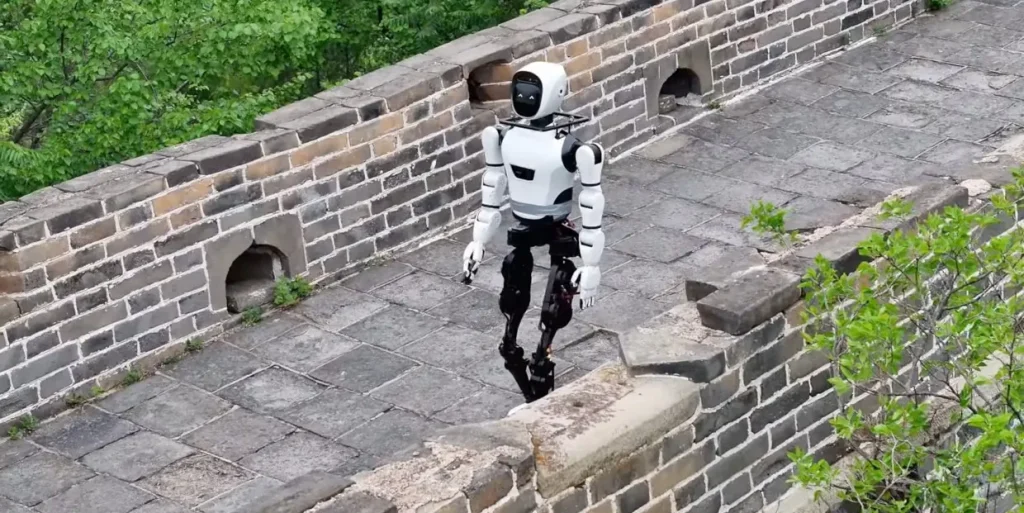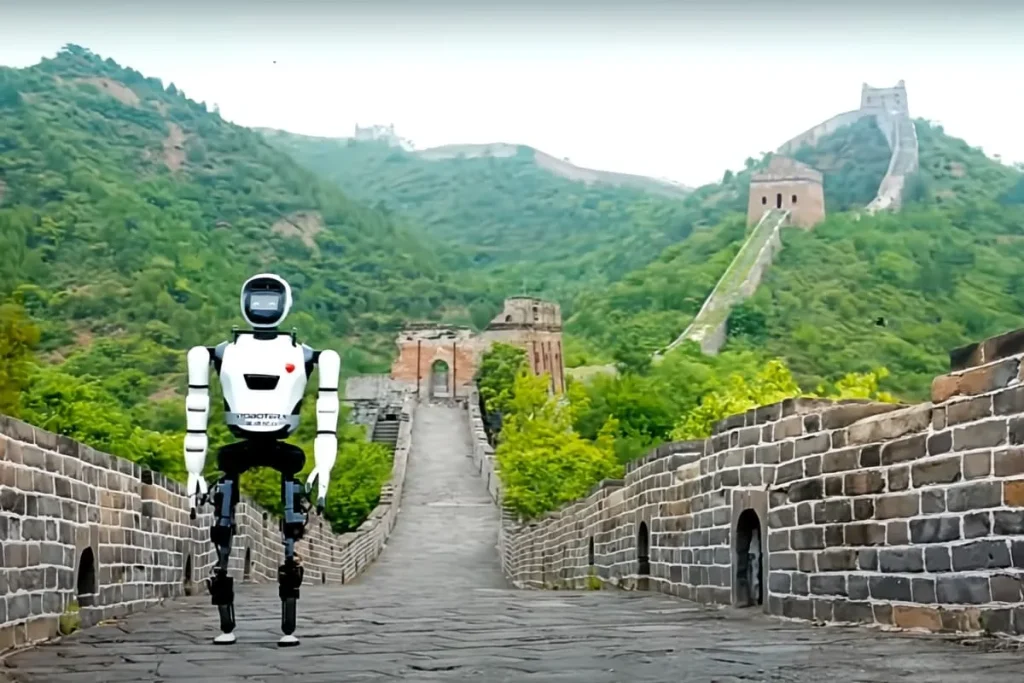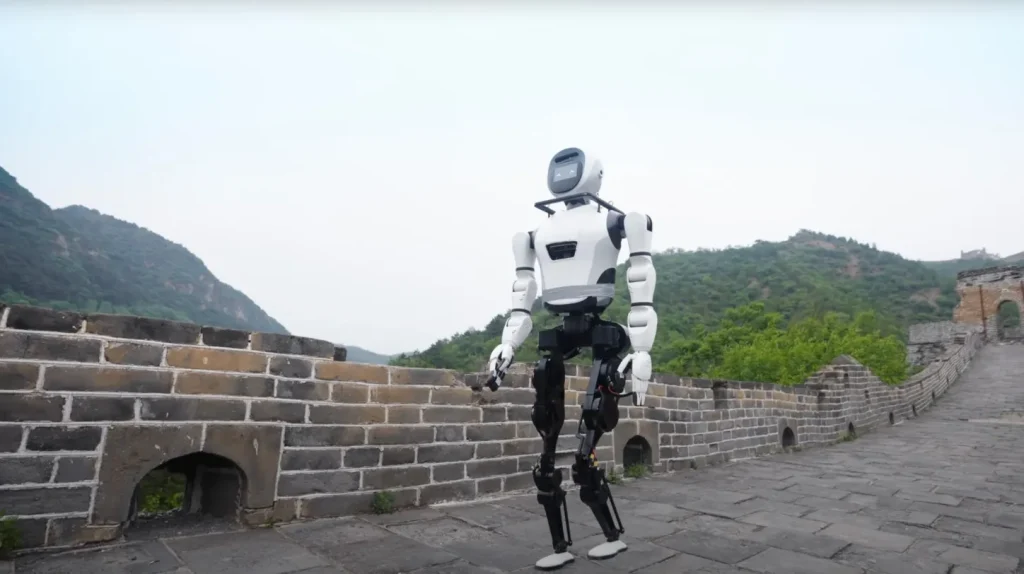Robot Era, a prominent Chinese humanoid robot developer, has made history by conducting a walking test for a humanoid robot on the iconic Great Wall of China.
In a recently released video, Robot Era showcases XBot-L, a full-sized humanoid prototype standing at 1.65 meters tall, navigating sections of the Great Wall. The footage captures XBot-L engaging in various activities such as walking, waving, shadowboxing, and demonstrating other movements.

The purpose of the test was to highlight XBot-L’s locomotion, dexterity, and self-balancing capabilities, particularly its adaptability to the complex outdoor environment presented by the Great Wall.
Walking on the Great Wall, with its weathered stone walls and uneven pavements, poses a significant challenge for bipedal humanoid robots. Typically, such robots, especially those lacking advanced kinematic support, struggle to maintain balance on uneven surfaces or navigate obstacles such as potholes and stairs.
Robot Era’s XBot-L, equipped with advanced perceptive reinforcement learning (RL) algorithms, demonstrated the ability to sense its surroundings, maintain balance, and adjust its pace and gait accordingly.

Yue Xi, co-founder of Robot Era, emphasized the role of perceptive RL algorithms in enhancing the robot’s ability to perceive and make decisions in unfamiliar terrains. This capability enables XBot-L to recognize complex road conditions, adjust its walking stance, and navigate obstacles in real-time.
Unlike some legged robots that rely solely on pre-programmed instructions for stair navigation, XBot-L’s real-time perception allows it to detect changes in its environment and adapt its path accordingly.
Xi highlighted the significance of end-to-end RL algorithms in facilitating the transition from perceptive data input to robotic locomotion, a critical aspect of the walking test.

The Great Wall demonstration follows closely on the heels of Robot Era’s unveiling of XHand, a dexterous hand designed for humanoid robots to perform various object grasping tasks. The company has intensified its investment in perceptive algorithms, reinforcement learning, and neural networks to accelerate product development and enhance the versatility of its robots in real-world scenarios.
